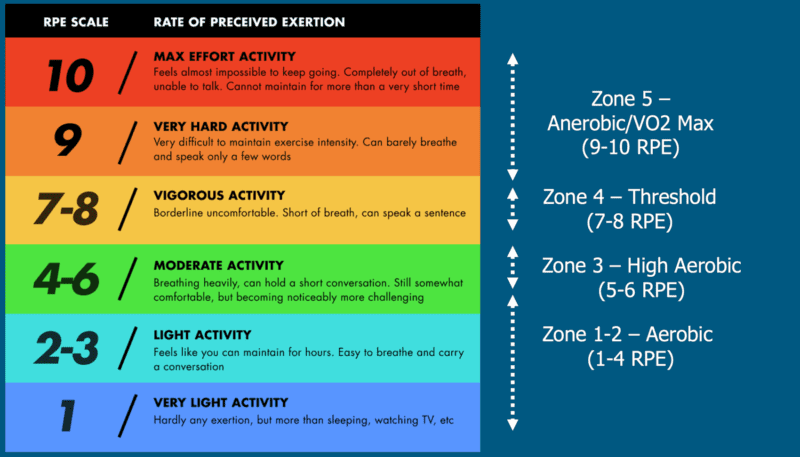Easy Runs – Essential Workout for Every Runner
Whether you are a beginner or an advanced runner, easy runs make up the largest portion of every runner’s training plan.
They provide a number of physical and mental benefits that can help you become a better and happier runner.
In this article you will find out what are easy runs, why are they important, at what pace should you do them, how often, and many other frequently asked questions.
What are easy runs?
Generally speaking, an easy run is a type of training done at low intensity with the goal of building endurance, improving fitness, and faster recovery. It also serves as a warm-up before a certain training session as well as a cooldown after training.
In the training plan, easy runs are usually the day after a more difficult workout or competition for faster recovery or the day before for better preparation.
Easy runs are done at a slow and comfortable pace and the focus is put on building endurance, improving fitness, and improving recovery, rather than running time or distance.
Tip
Listen to your body and adjust the duration and intensity of easy runs according to how you feel. If you are tired or under stress, do a shorter run or take a day off to allow your body to fully recover.

Why are easy runs important?
Easy runs are important for every runner and make the largest part of their training plan for several reasons:
1. They improve endurance
Easy runs help you build endurance and increase your weekly mileage because they allow you to run longer without accumulating fatigue.
Although easy runs may not seem challenging, they help you build endurance as they allow you to cover more miles and build an aerobic base without overexerting yourself.
2. They improve recovery
Easy runs improve your circulation and remove waste substances from your muscles, allowing you to recover faster.
3. They reduce the risk of injury
Easy runs are done at a low intensity and help your tendons, ligaments, joints, and bones adapt to the stress of running.
You can run further and longer without increasing your risk of injury and overtraining.
4. They improve mental health
Running is generally a great way to release stress, clear your mind, and improve your overall mental health.
Easy runs are no exception, and they can help you feel more relaxed and fresher after running.
Sometimes you might get tired of training and feel mentally and physically exhausted. In that case, easy runs are a great workout because they allow you to recover, while still staying active.
5. They improve aerobic capabilities
Easy runs can improve your aerobic fitness by increasing your lung capacity and strengthening your heart.
By building endurance and aerobic capacity, you become a more efficient and better runner.
6. They improve fuel utilization
Easy runs help you use fat more efficiently as a fuel source, which can help you run longer without “hitting the wall”.
7. They are a chance to improve running technique
Easy runs are a great opportunity to master and improve your running technique as they allow you to focus on your running technique and not stress about your running pace.
Should I warm up before an easy run?
Before each run, including easy runs, you should warm up. To warm up, do dynamic stretching exercises and mobility exercises.
You don’t have to cool down after an easy run. Instead, just do static stretching exercises if they suit you.
What pace should your easy runs be?
Easy runs are done at a conversational pace. This means that you should be able to talk normally without losing your breath.
During running, you should feel comfortable and relaxed. According to the rate of perceived exertion scale (RPE scale), exertion is rated between 1 and 3.

Generally speaking, easy runs should be 3-4 min/mi slower than your current 5K pace. However, keep in mind that it is difficult to determine the exact pace of an easy run as it may vary from day to day.
Your pace depends on your daily activities, the amount of sleep, whether you are tired, your menstrual cycle, weather conditions, and the like.
One day your easy run pace can be 10 min/mi, and the other day you might find it hard to maintain that pace, forcing you to slow down to keep the same effort level.
What heart rate is easy run?
Tracking the heart rate can help you determine your training intensity.
Easy runs fall between zone 1 and zone 2, or 60-70% of your maximum heart rate. For most runners, this is roughly 120-130 BPM.
Tracking the heart rate can be a good thing for runners as long as they are aware that their heart rate can vary.
It depends on the conditions and numerous other factors, such as weather conditions, terrain, hydration, diet, the amount of sleep, daily stress, and how you feel that day.
You might have to run at a different pace to stay within a certain zone. Due to that, it is best to listen to your body and adjust the pace according to how you feel.
Can easy runs be too slow?
Easy runs can’t be too slow, only too fast. A common mistake runners make is running too fast on days of light running.
Your subjective feeling can deceive you so it is recommended to use a smartwatch.
If you run faster than recommended, you will not adequately recover, and that increases your risk of injury and overtraining.
Tip
It’s better to run slower than faster. No matter how good you feel that day, if you have an easy run on your schedule, don’t run too fast. Instead, preserve your energy for tougher training sessions. Each training session has its purpose, including the days when you have easy runs on your schedule.

How long should an easy run be?
Generally speaking, if an easy run is part of a warm-up or cooldown, it should last between 10 and 15 minutes. And if it’s done as a separate workout, it should last around 30 minutes.
The duration depends on the runner’s goals and fitness level.
If you are a beginner or are returning to running after a longer pause, start with a shorter easy run of 15 minutes and gradually increase its duration.
If you are an advanced runner, your runs should last around 45 minutes, depending on whether you are preparing for a 5K or a marathon.
How often should I do easy runs?
How often you do easy runs depends on your training plan, goals, experience, and fitness level.
If you are a beginner, your training plan will consist of easy runs and combinations of running and walking, and 3 training sessions per week will be sufficient.
If you are an advanced runner, you will do between 2 and 4 easy runs in addition to other types of workouts, such as intervals, tempo runs, fartleks, or long runs.
Do easy runs increase your VO2 max?
Easy runs alone do not significantly increase your maximal oxygen uptake (VO2 max). Instead, they increase your aerobic fitness and endurance.
Easy runs are not intense enough to significantly increase your VO2 max.
To increase your VO2 max, you need to include high-intensity workouts, such as intervals.
They put more strain on your cardiovascular system and force it to adapt by increasing the amount of oxygen it can use.
However, it is important to keep in mind that the VO2 max is not the only factor determining your running performance.
To be the best runner you can be, it is important to follow a training plan that includes both easy runs and high-intensity workouts.
Can I do an easy run every day?
By doing easy runs every day, you will improve your health, strengthen your muscles, burn more calories, and feel better overall.
However, if you want to improve your running capabilities, you should not do easy runs every day.
It is necessary to have at least one day of complete rest per week to reduce the risk of injury and overtraining.
Likewise, for progress, it is necessary to train your body in different ways by doing different types of runs.
Info
If you do the same workout day after day and run the same distance at the same pace, you will only progress to a certain point.
However, if you don’t strain your body in different ways and set new challenges, your results and even your form will stagnate.
If you don’t know how to combine workouts and organize your training schedule, take a look at the training plans offered here. I believe you will find something for yourself.

Matea Matošević
Hi, I’m Matea! I’m an Olympic Marathon Runner, founder, and writer behind OLYRUN.com. On this site, I provide help in the form of my knowledge and experience to all who love running and active living. Read more…

